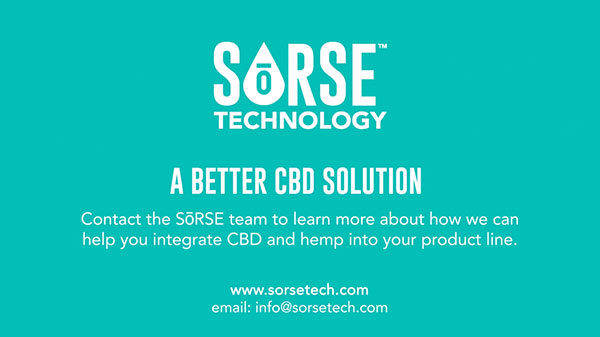Cannabinoids are lipophilic, meaning they dissolve in oils. For this simple reason, oil-based cannabis products have dominated the cannabis industry until very recently. Prior to legalization, they have been the only option; in an illicit market, the massive amounts of money, expertise, and time it takes to create a water-soluble emulsion is prohibitive. Given the nascent state of the legal industry, it’s only natural that oil-based products would be the norm. However, that is changing.
One way to look at the advantages of a water-based formula is to review the development hurdles that must be overcome without one. A water-based solution is not appropriate for any consumption method involving heat, such as vaping or smoking, so we are going to focus on edible, tincture, and topical formulations. One way to look at the advantages of a water-based formula is to review the development hurdles that must be overcome without one. A water-based solution is not appropriate for any consumption method involving heat, such as vaping or smoking, so we are going to focus on edible, tincture, and topical formulations.
Several product subcategories are impossible right out of the gate. Beverages, in which water is always the largest ingredient, are commercially untenable with oil. When you mix oil and water together, they rapidly separate, with the oil rising to the top of the liquid. Because of this, many products on the market need to be shaken up before drinking, which is not ideal for the producer or the consumer. The only way to create a stable beverage with oil is to infuse it into a high-fat base that contains natural emulsifiers, such as dairy or coconut milk.
From the start, direct infusion into any oil comes with its own suite of problems. If you are using dried, cured cannabis flowers for your infusion, many flavor and smell components in the plant material will come along as well, and the resulting oil will have a strong cannabis flavor. That may not be a problem if you are making brownies in your home kitchen, but it is not acceptable at scale. To make matters worse, this flavor will vary from batch to batch; even the most consistent grows are subject to the whims of nature. Trying to guess the flavor profile of any given batch of cannabis-infused oil is like trying to guess the amount of Vitamin A in any given carrot. There is a likely range, but each plant has its own unique composition.
To create edibles without the characteristic herbaceous notes of the cannabis flower, it is necessary to remove as much of the chlorophyll, lipids, flavonoid, and terpene content as possible. This can be reasonably and inexpensively achieved with CO2-extracted cannabis concentrates, but ideally done with a more neutral (and pricier) distillate. However, when working with these extremely low viscosity extracts, dispersal becomes a challenge. The cannabis oil must first be heated gently with a carrier oil; that carrier oil must be completely evenly dispersed into the final product, otherwise dosing will be uneven. In baked goods, the amount of mixing involved can result in a tough, dense crumb structure.
To insure that the oil has dispersed evenly, producers must then test the final product. That said, it is much harder to test a cookie, for example, than a batch of cannabis oil. The complexity of the ingredients and unreliability of results have led many producers to extrapolate from limited and/or non-randomized samples, and as a result, uneven dosing plagues the legal market.
There may also be consumer education considerations when choosing oil. My largest area of expertise is the development of cannabis topicals for sexual enhancement and relief. However, oil-based topicals are incompatible with safer sex barriers such as latex or polyisoprene condoms — a massive sexual health risk of which most buyers and customers are completely unaware — and they can cause irritation in some people. Moreover, the sensory profile of cannabis is, shall we say, less than sensual for many people. My primary impetus for developing Velvet Swing was to offer a neutral, gentle, barrier-compatible option, so that customers don’t have to rely on their budtenders for being informed and willing to dispense sexual health information.
Fortunately it’s no longer necessary to be bound by the limits of oil. It’s the first rung on the ladder, the easiest path to take, and still the wisest choice for some applications. However, if you are developing a beverage, tincture, or topical, consider what water-based formulation can help you do — and what it can help you avoid.





